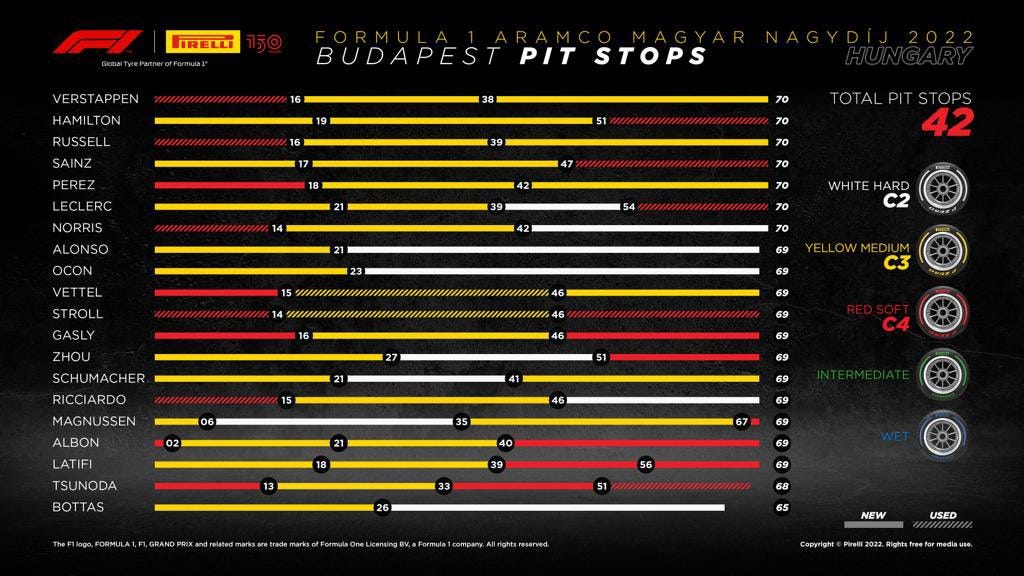Ferrari Disaster Class: Is Hard compound ever going to work? A deep-analysis of tire degradation
Mediums are the best compound for the race, Hards are a second slower
Let me outline the process of how we can calculate tire degradation for different compounds.
First we remove lap 1 data because it is not representative as each car travel different distance from their grid position to complete the lap.
As confirmed to me by formula1 engineers and others on r/F1Technical, we consider each car is filled with 110 kilos of fuel at the start and finishes with 0 kilos at the end. For each kilo of fuel we assume a lap time loss of 0.03s.
To remove outliers such as safety car, virtual safety car, spins, driver errors we only consider laps with lap time within 107% of the fastest lap of the race.
To arrive at the lap times for each compound, we use LOWESS(Locally Weighted Scatterplot Smoothing) which gives us a nice model fit for scattered data points.
We use Tyre Life as x-axis instead of Lap Number to use all the data available across various stints. And for y-axis we use the Fuel corrected lap times.
There are still several factors that effect tyre performance but are difficult to account for such as driver errors, car performance, wind, traffic, DRS and so on, but still this is a decent approximation used by formula1 engineers because it works.
Important takeaways from this kind of chart is to check for compound cross-overs. For instance, using mediums after 30 laps will result in a laptime loss as compared to drivers on hards, so the strategy team usually ask the driver to pit for a new set of tyres.
Ferrari Disaster class:
It is such a sad state of strategy for Ferrari this season, even fans who don’t support Ferrari are embarrassed.
Binotto after the race blamed the car pace instead of the poor strategy choice so let’s look at the possible strategies Ferrari could have employed to secure a win.
Let’s look at Charles pit stop because they are beyond reason, when every viewer and their grandma knows the hards are clearly not working for Haas and Alpine. Ferrari choose to box Charles on lap 39 even after he suggested he still has good pace and can extend his second stint on medium tyres.
There are two things Ferrari have to account for:
Use two different compounds.
Choose a tyre that can last.
Unfortunately for Ferrari after using their 2 sets of mediums, they only have hards which are a second slower and softs which can’t last 31 laps.
On Charles’ second stint the mediums are used for only 19 laps when we know from the tyre degradation chart, the mediums tyre life is around 30 laps, so if he had extended his stint for another 11 laps he would have pitted around lap 50 for new softs and be in contention for podium places at minimum.
Charles was on a similar strategy of tire choices as Hamilton who managed to finish P2 after starting P7 on the grid. The obvious and correct strategy is to extend the second stint of mediums till lap 52 and then pit for softs similar to Lewis, and our tyre degradation chart also points out that the softs-mediums cross over occurs after 18 laps.
It was a definite 1-2 until the race start for Ferrari. Looks like they just gave up, when Binotto walked off the pitwall in the middle of the race. It is further evident, when we consider that Ferrari didn’t even pit Charles to steal the fastest lap point even when he is almost a minute ahead of Lando in P7.


Meme of the Hungarian GP:






Please share your thoughts, ideas and feedback here. You can request a custom analysis of any race at https://www.buymeacoffee.com/TracingInsights